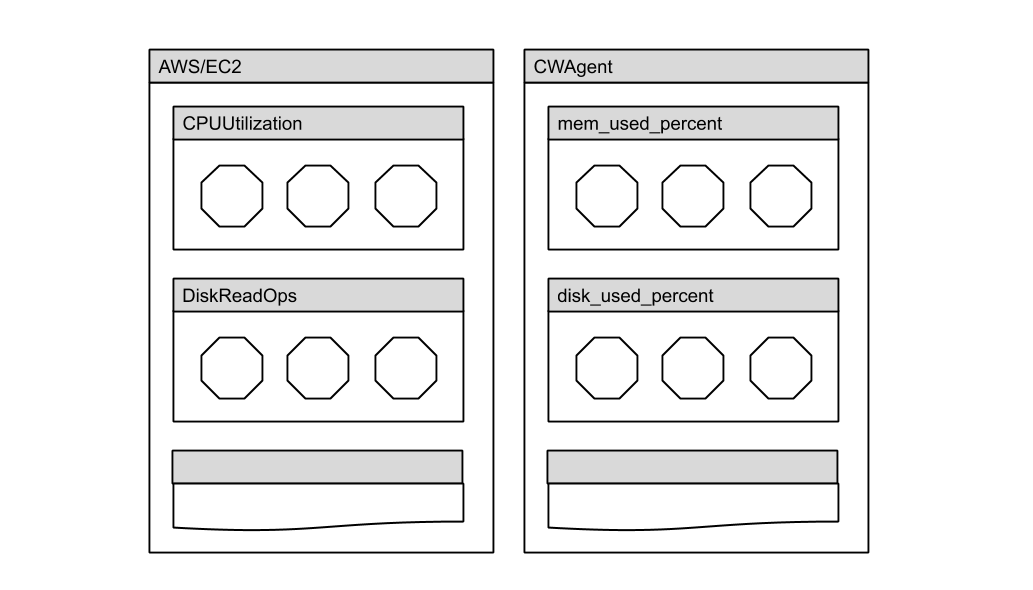Making sense of how Metrics are uniquely defined by a Name, a Namespace, and zero or more Dimensions.

I was surprised how long it took me to come to understand Amazon CloudWatch Metrics; thought to share my thinking.
Metrics are the fundamental concept in CloudWatch. A metric represents a time-ordered set of data points that are published to CloudWatch. Think of a metric as a variable to monitor, and the data points as representing the values of that variable over time. For example, the CPU usage of a particular EC2 instance is one metric provided by Amazon EC2. The data points themselves can come from any application or business activity from which you collect data.
…
Metrics are uniquely defined by a name, a namespace, and zero or more dimensions.
_— AWS — _Amazon CloudWatch Concepts
It is relatively easy to understand how Names and Namespaces relate to each other and to Metrics; for example:

Observations:
- As Amazon CloudWatch is a regional service, Namespaces are unique within a Region, e.g., AWS/EC2 is distinct from _CWAgent; _Namespaces are also not hierarchical
- Names are unique within a Namespace, e.g., CPUUtilization is distinct from DiskReadOps
- Multiple Metrics, however, can share the same Name (this will make more sense shortly)
- The AWS/EC2 Namespace is used by Amazon EC2 monitoring and CWAgent is used by Amazon CloudWatch Agent
note: It is interesting that the no-cost Amazon EC2 monitoring does not include either memory or disk utilization; for these, one must use Custom Metrics (starts at $0.30 per Custom Metric per month), e.g., generated by Amazon CloudWatch Agent.
#cloudwatch-custom-metrics #cloudwatch #aws #amazon #cloud computing
